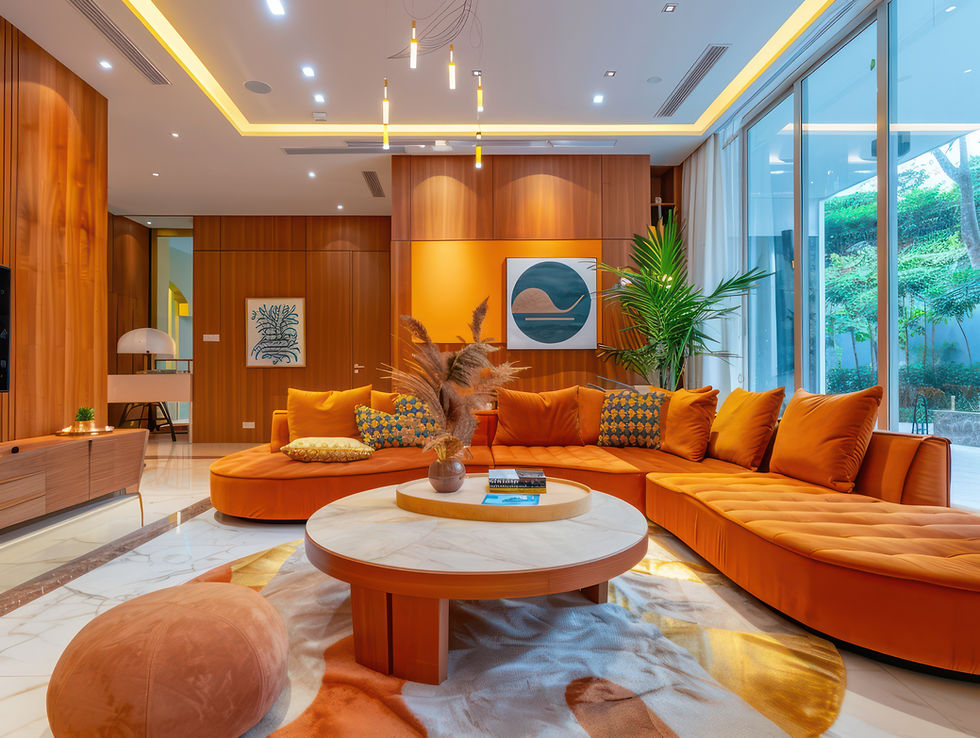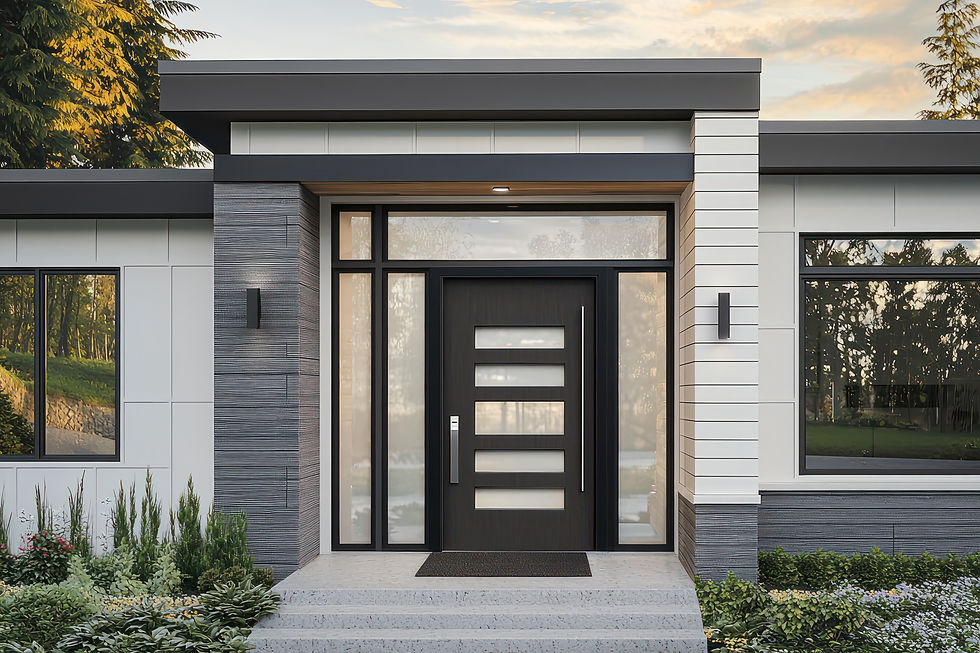Silent Drainers
- Aug 1
- 4 min read
And how to fix them with a touch of design psychology and elegance
We tend to blame tiredness on lack of sleep, too much screen time, or one-too-many coffees. But what if the real culprit was your home?
Yes—your home, the place meant to restore and revive you, might quietly be draining your energy. Not because it’s untidy or chaotic (though we’ll get to that), but because certain overlooked design choices can affect your brain, your mood, and even your circadian rhythm. From lighting to layout, scent to sound, here are ten subtle offenders—and a few beautifully simple ways to restore balance.
First, let’s talk about lighting. Cold, harsh overhead lighting—especially the bright white kind—can feel clinical and fatiguing. It tricks the brain into staying alert long after it’s time to wind down. If your living room feels more like a waiting room than a place to relax, the lighting may be to blame. The solution? Layer your lighting. Introduce warm-toned lamps at eye level and embrace dimmer switches where you can. A soft, amber glow in the evening helps cue the body for rest, signalling that the day is gently drawing to a close.
Next comes colour. While grey has certainly had its moment, too much of it can leave a space feeling flat and uninspired. Grey-on-grey interiors, without contrast or warmth, offer little stimulation to the senses—and they can leave you feeling just as dulled. Bring life back with tactile variety: warm wooden textures, linen, woven baskets, or a few caramel or terracotta accents. You’d be surprised how one textured cushion or rustic vase can shift the entire energy of a room.
Then there’s the matter of natural light—or the lack of it. A dim room can trick your brain into thinking it’s perpetually late afternoon, suppressing serotonin and making you feel sluggish, no matter how much sleep you’ve had. Maximise the daylight you do have. Use mirrors to reflect it, opt for sheer curtains to diffuse it softly, and keep windowsills clear of unnecessary clutter. Clean glass and open spaces invite the sun in.
Visual clutter is another silent drain on your mental energy. Your brain scans and processes everything within your field of view—papers, tangled cables, scattered remotes. It all adds up to background noise for your mind. Creating defined zones within your space can help: a tidy tray for your keys, a singular shelf for décor, drawer organisers that remove the daily rummage. It’s not about perfection; it’s about giving your eyes somewhere to rest.
A particularly draining setup is having your bedroom double as your workspace. If your bed faces your desk, or worse—if you work in bed—your brain never fully disengages. The boundary between ‘on’ and ‘off’ becomes dangerously blurred. Even in small spaces, it’s worth creating physical separation. A curtain, a folding screen, or even a rug to define zones can make a world of difference. Add visual cues like warm throws or soft lighting in the sleep zone to help signal that the day is done.
Background noise is another factor we often overlook. The hum of appliances, the buzz of tech, or even that low-level fridge drone—it all takes a toll. Your nervous system registers it, even when your conscious mind doesn’t. Whenever possible, turn off what you can. If you’re replacing appliances, look for quieter options. Textiles—curtains, rugs, cushions—don’t just look good; they absorb sound and create softness.

An often ignored design choice is the emptiness of walls. While minimalist interiors can look sleek, completely bare walls can feel emotionally flat. Homes need some reflection of personality—art, photos, or meaningful objects. Even one framed print or personal photograph can transform a sterile space into one that feels soulful. Art gives your mind somewhere to rest—and sometimes, to dream.
Bad furniture layout also contributes to fatigue. If you’re constantly navigating around coffee tables or squeezing past sideboards, your body absorbs that tension. Poor flow creates low-level frustration. Take a moment to reassess your layout. Could one item be moved to create openness? Is your sofa positioned to invite connection? Sometimes one simple shift can rebalance the room.
Scent is an invisible but powerful part of how a space feels. If your home always smells the same—be it fabric softener, old candles, or artificial air fresheners—your senses can grow dull. Try rotating scents throughout the year. Diffuse essential oils, simmer orange peels and cloves in winter, display fresh herbs in the kitchen. Fragrance, like music, changes your energy instantly.
Finally, consider those dead spaces—corners, landings, awkward nooks. When neglected, they quietly collect dust and drain life from the room. They serve as tiny reminders of things left unfinished. Reimagine these forgotten corners as “delight zones.” Add a trailing plant, a sculptural lamp, a chair and a cushion. Give them purpose—or at least a point of beauty.
The truth is, you don’t need to remodel your home to feel more energised. Most of the time, it’s about a shift in awareness—adding softness, clearing space, allowing light in. A beautiful home isn’t just one that photographs well. It’s one that gives back to you. That holds you when you’re tired, gently recharges you, and lets you breathe deeply. And sometimes, all it takes is the flick of a switch, a rearranged chair, or a whisper of lavender in the air.












Comments